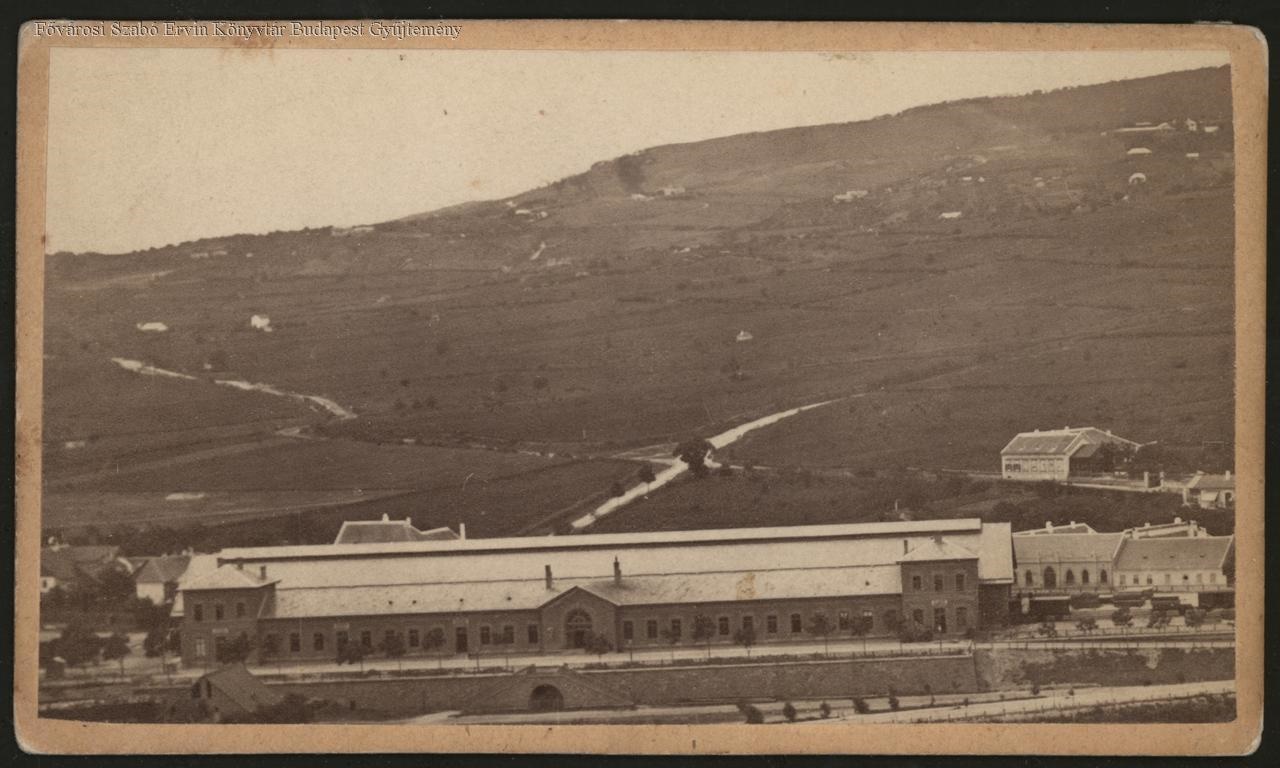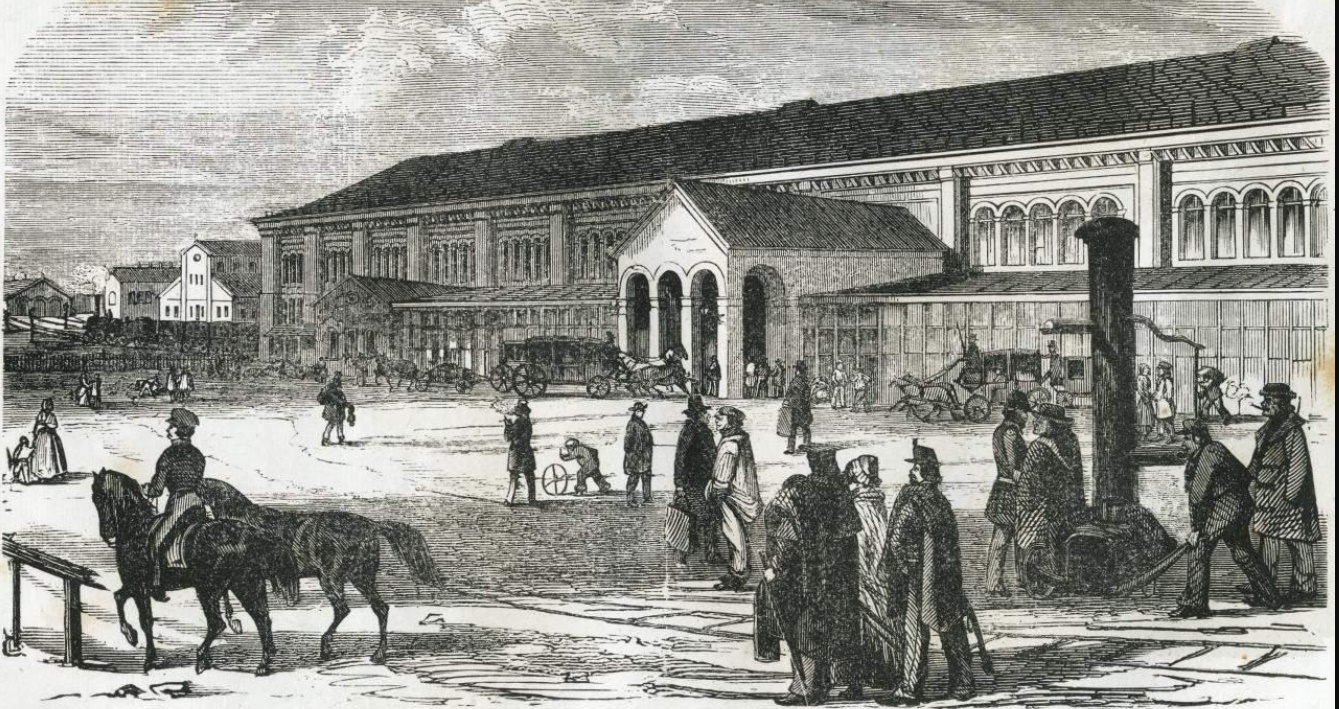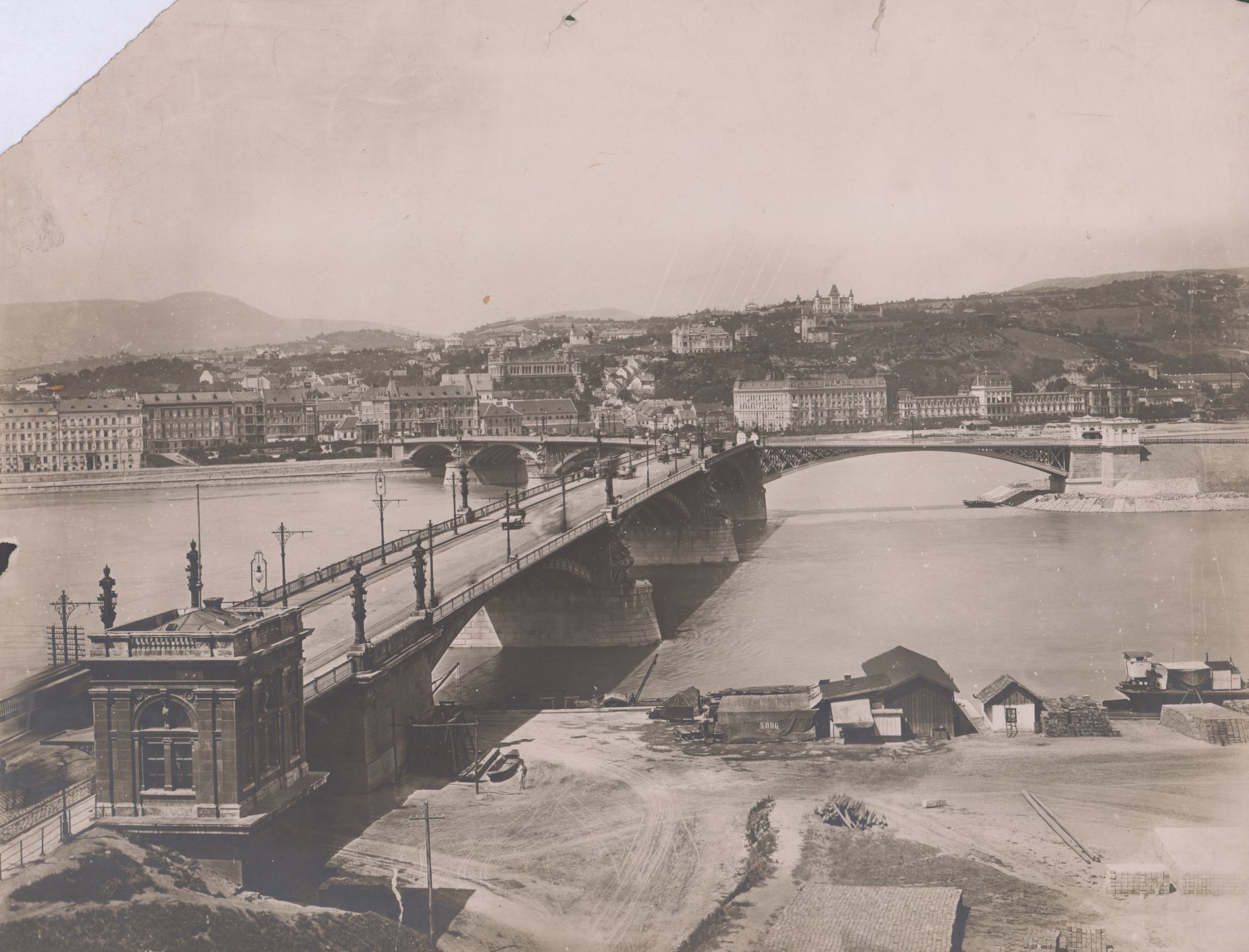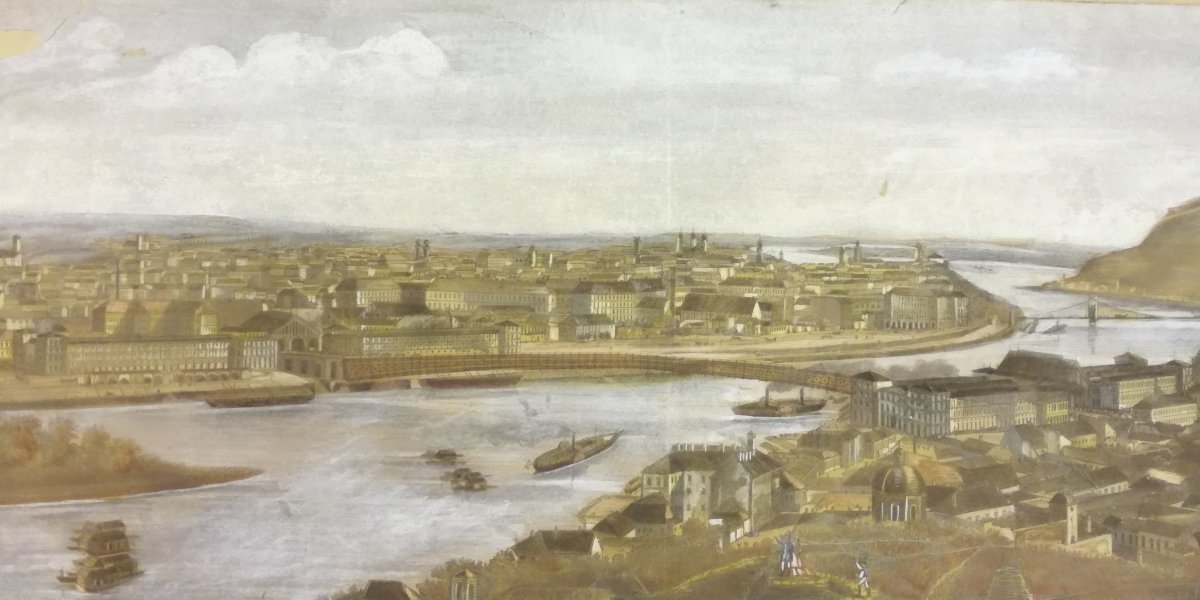The station of Southern Railway [Déli Vasút] in Buda was opened in 1861, until then there was only one railway station in Pest and Buda, the departure house of the Austrian State Railways (which was a private railway) on the site of today's Nyugati Railway Station.
Early investors had already seen a good deal in connecting the two railway lines, and in 1862 a contractor had already applied for permission for a railway line connecting the two lines and a railway bridge.
The idea seemed simple. In the then largely undeveloped areas of Buda, roughly on the line of today's Margit Boulevard, a railway bridge must be built to the Danube, then a loosely built-up area with factories and plants - parallel to today's Szent István Boulevard, but slightly south of it - they would have reached the Pest railway station by rails. The plan was also a good addition to the then very popular canal design of Ferenc Reiter, which designed a navigable canal approximately in the line of today's Outer Ring Road. Both lines of transport would have served the industrial outlets here.

The Déli Railway Station opened in 1861. Until then, there was a railway station only in Pest (photo: FSZEK, Budapest collection)
The Viennese government, since there was no Hungarian government in 1862, did not reject the applicant, who was, moreover, an 1848 military major, Ágoston Maygraber. As Maygraber could not provide adequate financial background at that time, he was asked to provide it first.
Disputes over the issuance of permits lasted until 1865, when Maygraber finally received permission to build a steam-powered railway between the Southern Railway and the departure house of the Austrian State Railways. The permit also covered public warehouses and a line to Zugliget.
The railway bridge over the Danube was also part of the permit. Maygraber had an idea for this, namely to build a bridge based on the patent of a Hungarian engineer, István Kauser, south of Margaret Island, which would have crossed the river with a huge opening of 500 meters.
Incidentally, the structure called the Pannónia Bridge could not be built at the technical level of the time, and even within the parameters such as the height of the structure, the elevation of the track given by Maygraber, it would still be impossible today. However, no one said that at the time, and everyone praised the model on display.

Pest departure house of the Austrian State Railway on the site of today's Nyugati Railway Station (source: FSZEK, Budapest collection)
Shortly afterwards, in 1867, someone else wanted to build the same connection, wanting to connect the two banks of the Danube not with a bridge but with a steam ferry, just below Margaret Island. This person was none other than Ödön Széchenyi, the younger son of István Széchenyi. Ödön Széchenyi also received the preliminary work permit, so at the beginning of 1867 two companies wanted to build a railway between the departure houses of the Southern Railway and the Austrian State Railway.
Interestingly, the Viennese government treated the privilege of the Chain Bridge Company to obtain all such crossing rights between Pest and Buda by requiring both Maygraber and the steam ferry company to enter into an agreement with the Chain Bridge Company.
However, Maygraber still did not have enough capital. Although he was constantly asking for a postponement, and in early 1868 official visits were made, the investors were not really flocking and he could not start work by the prescribed deadline. In the meantime, however, a lot has changed in Hungarian politics, first of all the structure of the government, since after the compromise a Hungarian government was formed again, which had completely different ideas for railway and urban development than the pre-1867 regime.
The air around Maygraber was slowly running out. Although the later decisive Hungarian politicians were his supporters in the mid-1860s, his increasingly active comrades in political life turned away from him, and in 1868 the Hungarian government revoked his license. Maygraber sued the state for years, even decades, not only to get back his invested capital, but also to try to realize the lost profits.
In the meantime, Ödön Széchenyi also left the steam ferry company, he was already busy in other directions at that time, and then the steam ferry company itself ceased to exist.

The Margaret Bridge was built on the site of the railway bridge 10 years later, between 1872 and 1876 (photo: MMKM, TFGY 8736)
The connection of the railway lines was also considered important by the new Hungarian government, but it would no longer have liked to see its location in the northern part of the city. A new aspect has appeared, a third railway station, the station of the Hungarian Northern [Északi] Railway, has been built next to the two private railway stations in the south-eastern part of the city. It was the former Józsefváros railway station, which was built in 1867 as the Pest station of this private railway. However, the Hungarian Northern Railway went bankrupt very quickly, and the entire company was bought by the Hungarian state, and soon after it established its own railway company called the Royal Hungarian Railways, ie MÁV [Magyar Királyi Államvasútak].
It would not have been beneficial for the state entering the railway business, mainly to safeguard national interests, if the rail link between the two halves of the country were between two private companies, mostly foreign-owned railway companies, the Southern Railway and the Austrian State Railways. They preferred that it also affect state-owned lines and be built as a state-owned railway from the outset, with a state-owned railway bridge on the Danube as part of it, so they favoured a south-facing connecting railway.
This also contributed - in addition to the Outer Ring Road and the Margaret Bridge as a representative investment - that the Déli and Nyugati railway stations were not connected for 150 years. However, this one and a half hundred year plan is now, in the 21st century,may become a reality underground.
Cover photo: The Pannónia Bridge in the Maygraber project (source: Hungarian Museum of Science, Technology and Transport)




































Hozzászólások
Log in or register to comment!
Login Registration